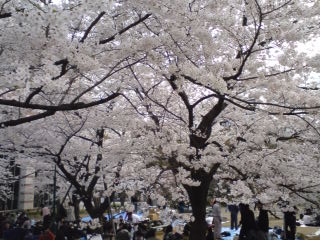Today, I would like to tell you about a place I like in Tokyo. It is the old merchant street of Yanaka Ginza 谷中銀座. It is situated about 3 min. on foot from Nippori station and around 5 min. from Sendagi station (Chiyoda line).
This small street still retains a traditional atmosphere nowadays. In Japanese, this kind of place is called “shitamachi 下町”. There many shops line up, selling food, craft or many daily items. You will recognize the most popular of them by the number of people queueing in front of them. By the way, a website presents those shops, but it is unfortunately only in Japanese.
From there, you can visit the surrounding area where there are many temples and the Yanaka cimetery. Enjoy the sight-seeing !


